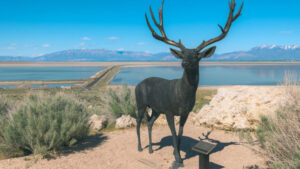Discovering Where Dinosaur Bones Are Found Globally
Dinosaur bones are uncovered in various locations worldwide, from the United States to China. Fossils are often found in rock formations dating back to the Mesozoic Era.
Discovering dinosaur bones requires a mix of skill, scientific knowledge, and often, a touch of luck.
The fossil record that paleontologists have pieced together spans every continent, providing evidence that these ancient creatures once roamed across what is now North America, Asia, Europe, South America, Africa, Australia, and even Antarctica.
Sites rich in dinosaur fossils, like the Morrison Formation in the US and the Gobi Desert in Mongolia, offer critical clues to our planet’s prehistoric life.
Researchers meticulously search these areas, navigating rugged terrains and harsh climates to unearth the secrets of Earth’s distant past.
Each discovery sheds more light on the dinosaurs’ living conditions, behaviors, and eventual extinction, captivating the curiosity of scientists and the public alike.
With advancements in technology and techniques each year, new locations yielding these incredible finds continue to tell the story of a world long lost to time.
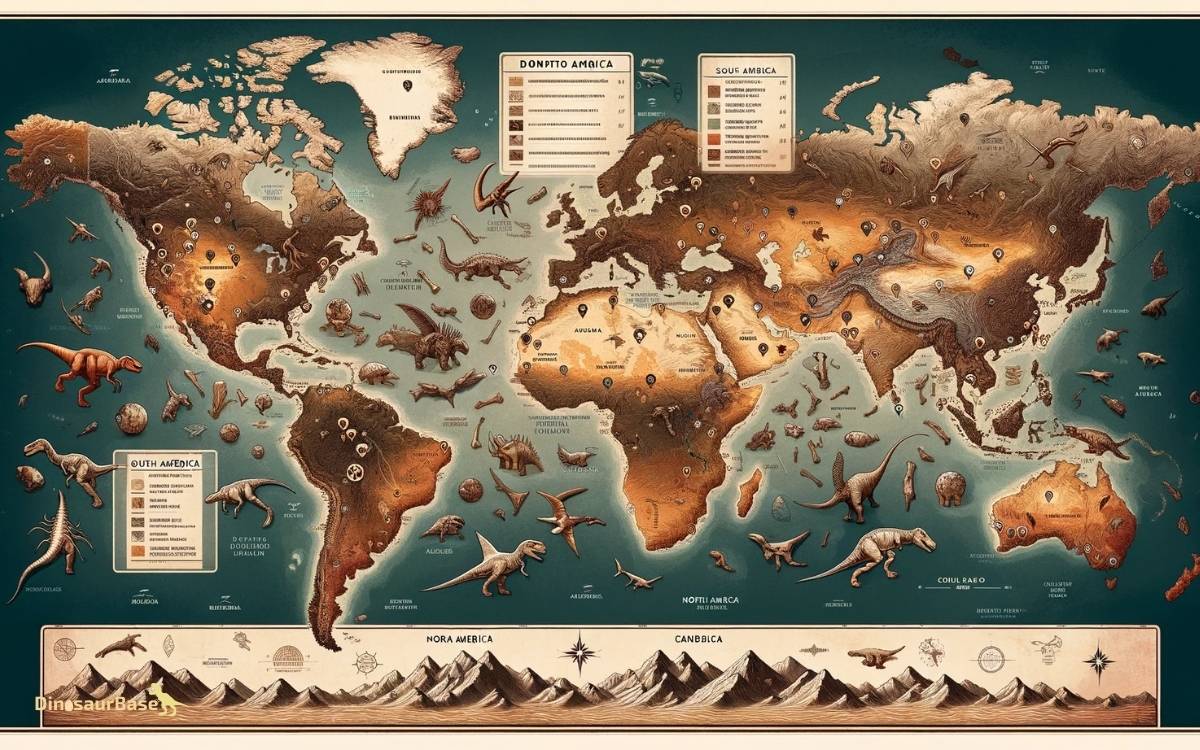
Tracing Back To The Mesozoic Era
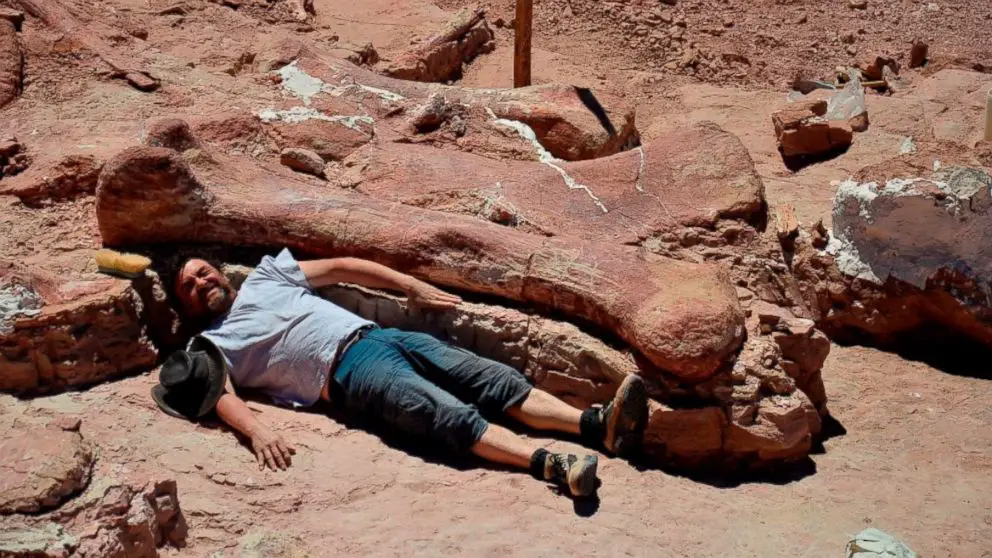
Imagine stepping back into a time when dinosaurs roamed Earth. This journey takes us to the Mesozoic Era, over 250 million years ago. Discoveries of dinosaur bones give us clues to their lives. Let’s explore where these giants left their mark.
The Geographical Distribution
Today, dinosaur fossils lie buried within the layers of the Earth’s crust. Scientists unearth these treasures across all continents. Discoveries span from the vast deserts of North America to the icy expanse of Antarctica.
Key regions include:
- North America: Famous for Tyrannosaurus and Triceratops
- South America: Home to giant sauropods like Argentinosaurus
- Asia: Velociraptor fossils found in Mongolia’s Gobi Desert
- Europe: Rich in Jurassic marine life remains
- Africa: Where Spinosaurus remains were discovered
- Antarctica: Once warmer, yielding dinosaur skeletons
- Australia: Known for unique dinosaur species
Times Of Pangea And Laurasia
In the Mesozoic Era, Earth’s continents were arranged differently. Initially, one massive continent named Pangea existed. Over time, it split into two: Laurasia in the north and Gondwana in the south.
Continental Drift: As these continents moved apart, so did the dinosaurs. Different groups evolved separately in different lands. This drift created diverse dinosaur populations globally.
Dinosaur Habitats:
- Pangea was a mix of deserts and lush landscapes.
- Laurasia featured vast land bridges enabling dinosaur migration.
- Gondwana hosted dense forests where colossal dinosaurs thrived.
This continental dance shaped where we find dinosaur bones today. These majestic creatures’ remains are a map of prehistoric Earth, guiding us through a lost world of giants.
Hotspots For Dinosaur Fossils
Dinosaur fossils tell a thrilling story about our planet’s history. Scientists and enthusiasts alike explore various regions around the globe to unearth these prehistoric remnants.
Certain areas, known as hotspots, yield rich fossil discoveries, painting a vivid picture of life millions of years ago. In this post, we’re digging into two of the most prolific fossil grounds on Earth.
North America’s Rich Strata
North America stands out as a leader in dinosaur discovery. The continent’s diverse geology preserves a wide range of fossilized bones and footprints.
- Badlands National Park, known for its rugged beauty, offers a glimpse into the Oligocene epoch.
- Utah’s Dinosaur National Monument spills secrets from the late Jurassic period.
- The Hell Creek Formation in Montana is a treasure trove of fossils from the end of the Cretaceous.
Each site serves as a time capsule, revealing unique species and ecosystems that once thrived across North America.
Gobi Desert’s Hidden Treasures
The Gobi Desert’s vast sands conceal one of the most significant fossil reservoirs. Its arid climate helps preserve dinosaur bones and eggs.
| Location | Significance |
|---|---|
| Flaming Cliffs | Site of the first dinosaur eggs discovery |
| Nemegt Basin | Home to a diverse range of species |
| Bayan Shireh Formation | Famous for the theropod Tarbosaurus |
Excavations in the Gobi continue to shed light on dinosaur evolution and their response to changing environments.
Southern Hemisphere Discoveries
The world of dinosaurs stretches across the globe, and the Southern Hemisphere boasts significant finds.
This region, full of ancient secrets, has unveiled remarkable dinosaur bones that tell stories millions of years old. Let’s take a closer look at these prehistoric discoveries.
Argentina’s Dinosaur Plains
Argentina is a treasure trove for paleontologists. Its vast plains have yielded an incredible array of dinosaur fossils.
With bold finds like the largest dinosaur species ever discovered, the region has become a hotspot for new insights into the Jurassic era.
- Patagonia’s rich fossil beds reveal titanic herbivores.
- The fearsome Carnotaurus roamed here, leaving behind clues to its existence.
Australia’s Ancient Finds
In Australia, the quest for dinosaur knowledge uncovers exceptional specimens. The continent, once part of the supercontinent Gondwana, holds a unique paleontological significance.
| Site | Discoveries |
|---|---|
| Queensland | Home to ferocious carnivores and giant sauropods. |
| Victoria | Known for a diversity of small to medium-sized dinosaurs. |
Explorers continue to uncover bones in these regions, revealing new chapters in Earth’s history.
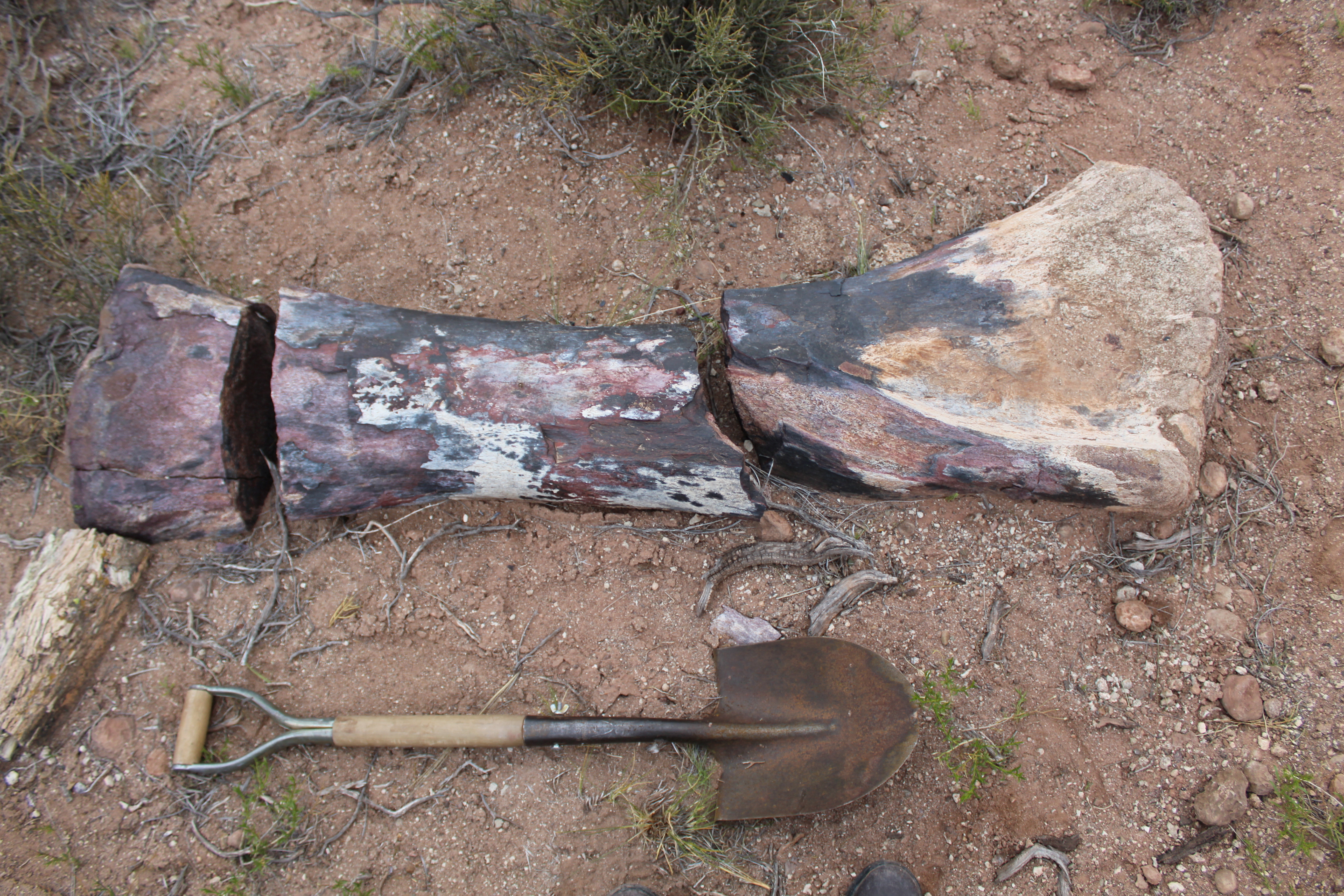
Credit: www.reuters.com
Challenges In Global Dinosaur Paleontology
Unraveling the mysteries of the prehistoric world is an exciting journey. Yet, paleontologists face many hurdles when searching for dinosaur bones across the globe. These challenges range from accessing remote dig sites to dealing with harsh weather.
Let’s explore some of the key obstacles that scientists encounter in their quest to understand the ancient giants of our planet.
The Accessibility Puzzle
Finding dinosaur bones requires navigating tough terrain. Often, these remains lie in remote, inaccessible places.
Mountains, deserts, and dense forests create physical barriers. Political borders and private land rights can also prevent experts from reaching potential dig sites.
- Remote areas lacking roads or trails
- Restrictions due to political situations or land ownership
- Need for special permissions and local cooperation
Climatic And Environmental Factors
Weather and environment greatly affect dinosaur fossil recovery. Extreme temperatures, from scorching heat to freezing cold, challenge scientists both physically and in terms of preserving delicate fossils.
| Climatic Challenge | Impact on Fossil Recovery |
|---|---|
| Heavy Rainfall | Can cause erosion and damage to fossils. |
| High Temperatures | May lead to rapid deterioration of uncovered bones. |
| Cold Climates | Fossils can be locked within ice or hard rock, hindering excavation. |
Environmental protections also play a role. Some sites are in protected areas to preserve eco-balance. This can limit how paleontologists work and what tools they use.
Impact Of Modern Technology On Excavation
Technology revolutionizes how we uncover the past. Excavation now employs cutting-edge tools, evolving the search for dinosaur bones into a high-tech treasure hunt.
Advancements In Detection Equipment
Innovative detection devices transform paleontological surveys. Ground-penetrating radar (GPR) and magnetometers peer beneath the surface, hinting at possible fossil locations without moving a single speck of dirt.
Here’s a quick look:
- Ground-Penetrating Radar: Sends radio waves into the ground and detects reflected signals from structures below.
- Magnetometers: Measure magnetic field variations caused by different soil compositions, suggesting the presence of fossils.
Gis And Remote Sensing In Paleontology
Geographic Information Systems (GIS) and remote sensing technologies mark a leap forward. Collecting data from satellite imaging and aerial photographs, scientists map and analyze potential dig sites with precision.
| Technology | Role in Paleontology |
|---|---|
| GIS | Organizes and visualizes geographical data for site selection. |
| Remote Sensing | Gathers detailed images, identifying features invisible to the naked eye. |
Drones also join the quest, soaring over remote regions to capture high-resolution footage. They reveal patterns and anomalies that could signal dig-worthy spots.
Significant Finds And Their Stories
Dig into the tales of earth-shattering discoveries. Unearth the gripping stories of the giants that once ruled the world. The echoes of their footsteps still resonate around the globe.
The T. Rex Revolution
The King of Dinosaurs steps into the limelight once again.
Fossil hunters unearthed a bone bonanza in North America.
This discovery changed our view of the mighty Tyrannosaurus Rex.
- 1990: Sue uncovered in South Dakota – A T. Rex tale of epic proportions.
- The Montana finds – A hotspot for more T. Rex skeletons.
- Impressive teeth and bones – Showcasing the predator’s sheer power.
Sauropods Of Patagonia
Patagonia, a haven for dinosaur discoveries, reveals the giants of the Jurassic. Sauropod fossils, found here, shed light on these colossal creatures.
| Year | Discovery | Significance |
|---|---|---|
| 1993 | Argentinosaurus | World’s largest dinosaur find. |
| 2014 | Dreadnoughtus | One of the most complete fossils. |
Footprints of these long-necked giants have also left a permanent mark in stone. Their massive size still amazes scientists and enthusiasts alike.
Public And Scientific Engagement
Discovering dinosaur bones is a thrilling adventure. Both scientists and the public play huge roles.
Museums showcase past finds while communities help uncover new ones. Together, we journey back to the age of dinosaurs.
Museum Exhibits Worldwide
Museums are gateways to prehistoric life. They display dinosaur skeletons for all to see. These exhibits bring us closer to these magnificent creatures.
They spark curiosity in young minds, fostering the next generation of paleontologists. Here are some famous museums with dinosaur exhibits:
- American Museum of Natural History, New York, USA
- Natural History Museum, London, UK
- Field Museum, Chicago, USA
Community Involvement In Fossil Hunting
Community digs make paleontology accessible. Locals join experts in the hunt for fossils. This involvement unites people with science. Many discoveries have bloomed from such partnerships. Here’s how you can get involved:
- Join local fossil hunting groups.
- Participate in museum-led excavations.
- Attend local science fairs or expos.
Those who can’t dig in the field can still contribute. They can join workshops or donate to local scientific institutions. Every effort counts towards unraveling Earth’s ancient history.
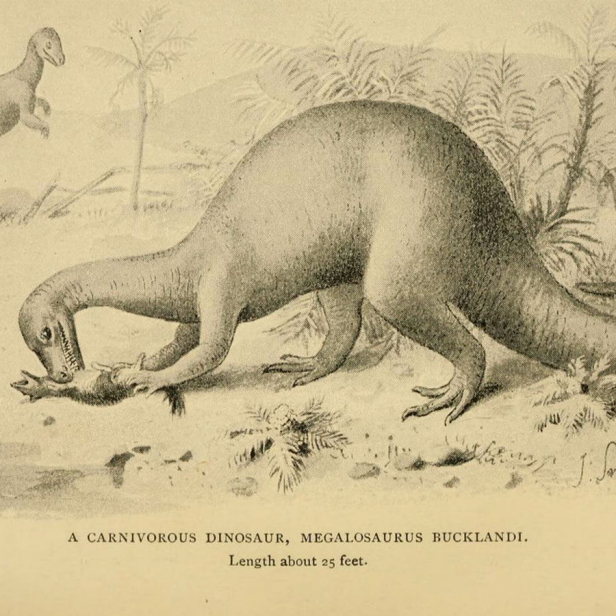
Credit: www.discovery.com
Can the Dinosaur Bones Found in Museums Be Traced Back to Global Discoveries?
Yes, identifying real dinosaur bones found in museums can be traced back to global discoveries. Through advanced scientific techniques such as carbon dating and DNA analysis, researchers are able to confirm the authenticity and origins of these fossils, providing valuable insight into the history of dinosaurs.
Frequently Asked Questions For Discovering Where Dinosaur Bones Are Found Globally
Where In The World Have They Found Dinosaur Bones?
Dinosaur bones have been found on every continent around the world, including Antarctica.
Where Are Fossils Found In The World?
Fossils are found globally, with a high frequency in sedimentary rock formations. Renowned sites include North America, parts of Asia, Europe, and Africa. These remnants of prehistoric life often emerge in deserts, mountains, and river valleys.
What Is The New Dinosaur Discovered In 2023?
As of my knowledge cutoff in 2023, there are no reports of a new dinosaur discovery this year. Stay tuned for updates on paleontological discoveries.
Have Any Full Dinosaur Skeletons Been Found?
Yes, paleontologists have discovered full dinosaur skeletons, but such complete finds are rare due to various factors affecting fossilization.
Conclusion
Our journey through the ancient landscapes where dinosaurs once roamed has been thrilling. We’ve spanned deserts, scrutinized quarries, and explored remote regions on every continent. These locations hold keys to our prehistoric past, allowing us to piece together the lives of these fascinating creatures.
As paleontologists continue to unearth clues, we can all share in the excitement of discovering the secrets locked in the bones of the Earth’s formidable inhabitants.





